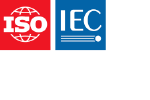Résumé
This document addresses some of the security requirements in the areas of authentication and other security services through the provision of a set of frameworks upon which full services can be based. Specifically, this Recommendation | International Standard defines frameworks for:
? public-key certificates; and
? attribute certificates.
The public-key certificate framework defined in this Recommendation | International Standard specifies the information objects and data types for a public-key infrastructure (PKI), including public-key certificates, certificate revocation lists (CRLs), trust broker and authorization and validation lists (AVLs). The attribute certificate framework specifies the information objects and data types for a privilege management infrastructure (PMI), including attribute certificates, and attribute certificate revocation lists (ACRLs). This Recommendation | International Standard also provides the framework for issuing, managing, using and revoking certificates. An extensibility mechanism is included in the defined formats for both certificate types and for all revocation list schemes. This Recommendation | International Standard also includes a set of extensions, which is expected to be generally useful across a number of applications of PKI and PMI. The schema components (including object classes, attribute types and matching rules) for storing PKI and PMI information in a directory, are included in this Recommendation | International Standard.
This Recommendation | International Standard specifies the framework for strong authentication, involving credentials formed using cryptographic techniques. It is not intended to establish this as a general framework for authentication, but it can be of general use for applications which consider these techniques adequate.
Authentication (and other security services) can only be provided within the context of a defined security policy. It is a matter for users of an application to define their own security policy.
Informations générales
-
État actuel: PubliéeDate de publication: 2020-11Stade: Norme internationale publiée [60.60]
-
Edition: 9
-
Comité technique :ISO/IEC JTC 1/SC 6ICS :35.100.70
- RSS mises à jour
Cycle de vie
-
Précédemment
AnnuléeISO/IEC 9594-8:2017
-
Actuellement
-
00
Préliminaire
-
10
Proposition
-
20
Préparation
-
30
Comité
-
40
Enquête
-
50
Approbation
-
60
Publication
-
90
Examen
-
95
Annulation
Rectificatifs techniques
Corrigent l’édition en vigueur; gratuits; non inclus dans le texte de la norme en vigueur.PubliéeISO/IEC 9594-8:2020/Cor 1:2021
PubliéeISO/IEC 9594-8:2020/Cor 2:2024
Amendements
Proposent un contenu additionnel; disponibles à l’achat; non inclus dans le texte de la norme en vigueur.ProjetISO/IEC 9594-8:2020/DAmd 1
-
00


